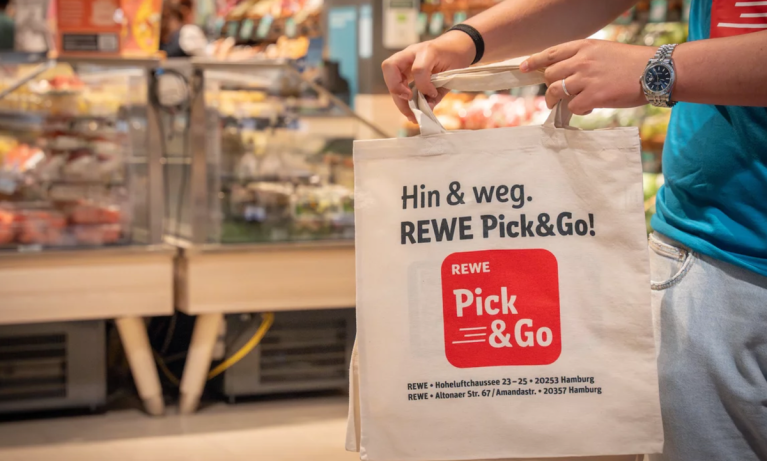Computer Vision Checkout Expands Globally Despite Hurdles

Around the world, computer vision checkout is growing, both in terms of its availability and its physical footprint, despite significant cost challenges to making the retail technology worth its while.
German grocer Rewe recently announced Europe’s largest-yet computer-vision-powered checkout store, with its new roughly 13,000-square-foot location in Hamburg. The so-called “Pick&Go” store, created in partnership with retail technology company Trigo Vision,
Offers Just Walk Out-style checkout as well as more traditional self-scanning kiosks, scan-less self-checkout kiosks and traditional, staff-supported checkout.
“With the relief of customers in the checkout area, we as a store team also have new tasks and more freedom for advice, product range maintenance and service,” store manager Joschua Zimmermann said in a statement, as translated by Google. “We use the time for what makes us strong — being there in person.”
Retailers worldwide are facing a confluence of pressures: rising labor costs, a growing preference for self-service among younger demographics and the ever-present need to enhance customer experience. Computer vision checkout offers a compelling solution, promising faster checkouts and reduced staffing needs.
The potential benefits of computer vision checkout are clear. On the consumer side, quicker checkouts lead to happier customers. Today’s shoppers expect convenience, speed and efficiency. Computer vision checkout meets these expectations by providing a frictionless shopping experience, allowing consumers to bypass lengthy lines and complete transactions easily.
Many shoppers seek out self-guided experiences. PYMNTS’ ”Digital-First Banking Tracker® Series Report” highlighted findings that 84% of consumers in the U.S. said they enjoy using self-service kiosks, and two-thirds of individuals said they favor self-service models over staffed checkout lanes.
Plus, for retailers’ margins, reduced staffing needs can free up resources for other areas of the store, and computer vision systems can provide valuable customer data. The technology can generate vast amounts of data on consumer behavior, such as shopping patterns, product preferences, and dwell times. Retailers can leverage this data to gain insights, personalize marketing strategies, and improve store layouts as well as to sell it to external companies. Amazon, for instance, monetizes its Just Walk Out data with its Store Analytics service.
Yet the success of these implementations is far from guaranteed. Computer vision systems require significant upfront investment in cameras, hardware and software. Even as Amazon has been licensing out its Just Walk Out system to external retailers, it is scaling back on the technology in its own grocery stores in favor of smart carts.
Additionally, while younger, tech-savvy consumers readily embrace new technologies, older generations may be resistant to change. It is unlikely that traditional checkout lanes will disappear entirely in the near future. Instead, a hybrid model may be more probable, with computer vision checkout coexisting with traditional cashier-operated lanes. This allows retailers to cater to different customer preferences while maximizing operational efficiency.
In an interview with PYMNTS last year, Jordan Fisher, then CEO of autonomous retail technology company Standard AI, argued that changing shopper behavior requires a slow, gradual approach.
“I think hybrid is the way forward,” he said. “If you imagine 10 years ago, when self-checkout was really starting to be deployed, if [retailers] had just said, ‘OK, it’s self-checkout everywhere — 100% has to be through self-checkout,’ it would have been a disaster. [You] need that hybrid, and we’re seeing the same thing with autonomous.”
For all PYMNTS retail coverage, subscribe to the daily Retail Newsletter.